Authors: David Bordwell,Kristin Thompson
B0041VYHGW EBOK (80 page)
The
pan
(short for
panorama
) movement rotates the camera on a vertical axis. The camera as a whole does not move to a new position. Onscreen, the pan gives the impression of a frame horizontally scanning space. It is as if the camera “turns its head” right or left
(
5.121
,
5.122
).
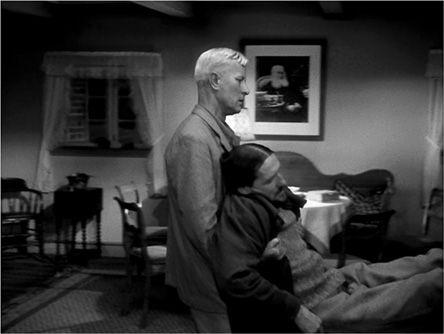
5.121 During a shot in Dreyer’s
Ordet,
the camera pans right …
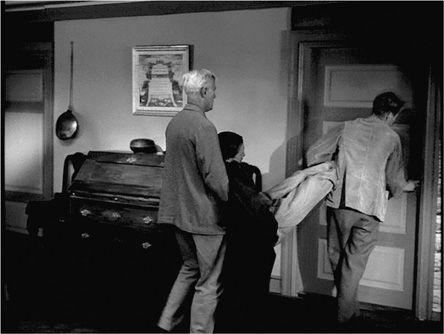
5.122 … to keep the figures in frame as they cross a room.
The
tilt
movement rotates the camera on a horizontal axis. It is as if the camera’s head were swiveling up or down. Again, the entire camera does not change position. Onscreen, the tilt movement yields the impression of unrolling a space from top to bottom or bottom to top
(
5.123
,
5.124
).
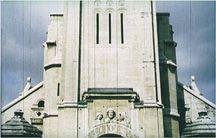
5.123 François Truffaut’s
The Bride Wore Black
begins with a tilt down a church spire …
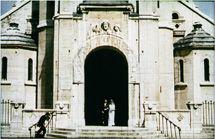
5.124 … to the church door.
In the
tracking
or
dolly shot
, the camera as a whole does change position, traveling in any direction along the ground—forward, backward, circularly, diagonally, or from side to side
(
5.125
,
5.126
).
Note how the figures remain in the same basic relationship to the frame as they stroll along a sidewalk, while the front of the house that they hope to buy remains visible behind them.
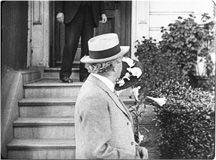
5.125 During this lateral tracking shot in Erich von Stroheim’s
Greed,
the camera moves rightward …
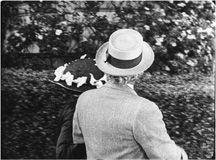
5.126 … along with the two characters.
In the
crane shot
, the camera moves above ground level. Typically, it rises or descends, often thanks to a mechanical arm that lifts and lowers it. The mourning scene in
Ivan the Terrible
begins with a crane downward
(
5.127
,
5.128
).
A crane shot may move not only up and down, like an elevator, but forward and backward or from side to side
(
5.129
,
5.130
).
For
The Thin Red Line,
Terence Malick used a crane with a 72-foot arm to let the camera slither over tall grass during battle scenes. Variations of the crane shot are helicopter and airplane shots.
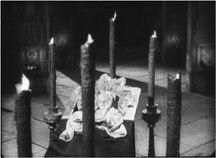
5.127 In
Ivan the Terrible,
from a high-angle view of the bier, the camera cranes down …
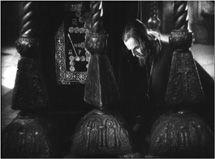
5.128 … to end with a straight-on framing of Ivan seated at the bier’s base.
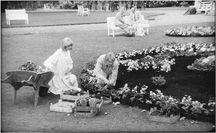
5.129 At the end of Karel Reisz’s
Morgan!
the camera moves diagonally up …
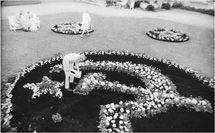
5.130 … and back to reveal that the hero’s apparently innocuous flower garden proclaims his Communist sympathies.
Pans, tilts, tracking shots, and crane shots are the most common framing movements, but virtually any kind of camera movement can be imagined (somersaulting, rolling, and so on). And as we shall see, types of camera movements can be combined.
“I realized that if I could just get to the really good scripts, I could approach it the way I approach literature—why the camera moves this way because of this motif—and then it became fascinating.”
—Jodie Foster, director,
Little Man Tate
“It’s a compulsion of mine to move the camera, and I now know why. It enhances three-dimensionality. It puts you in the space, and if you move the camera the audience becomes aware of the space.”
— George Miller, director,
The Road Warrior
